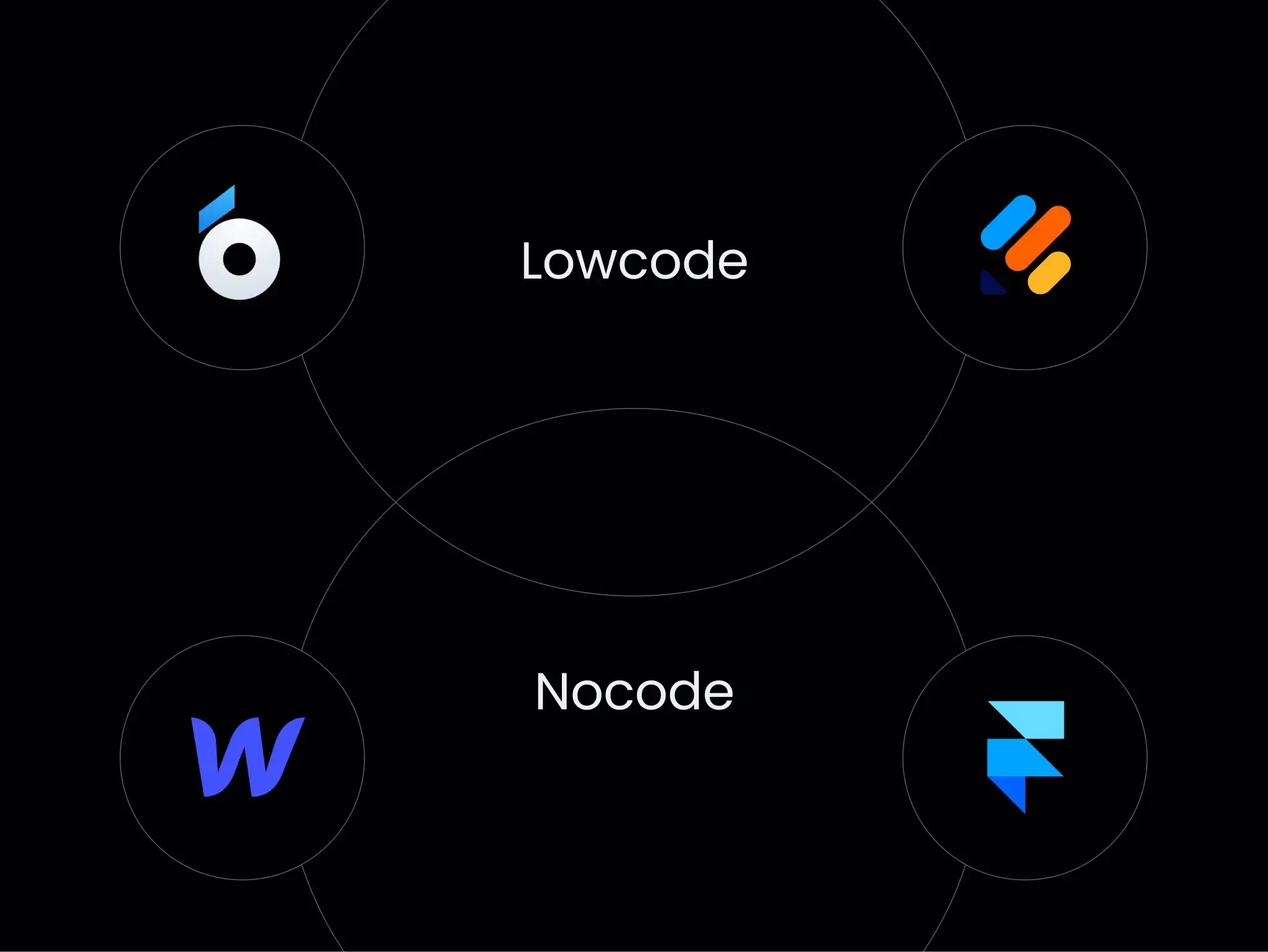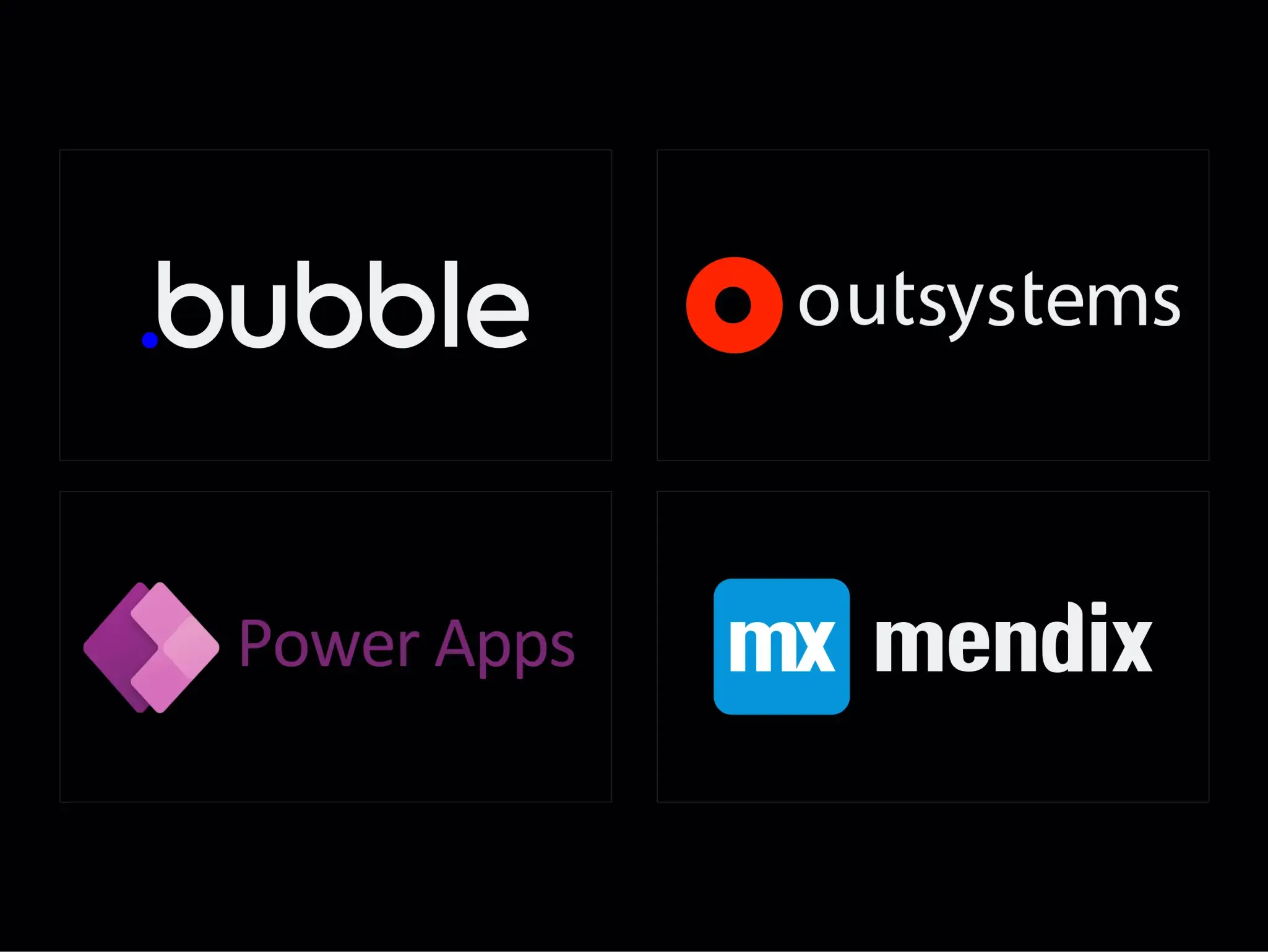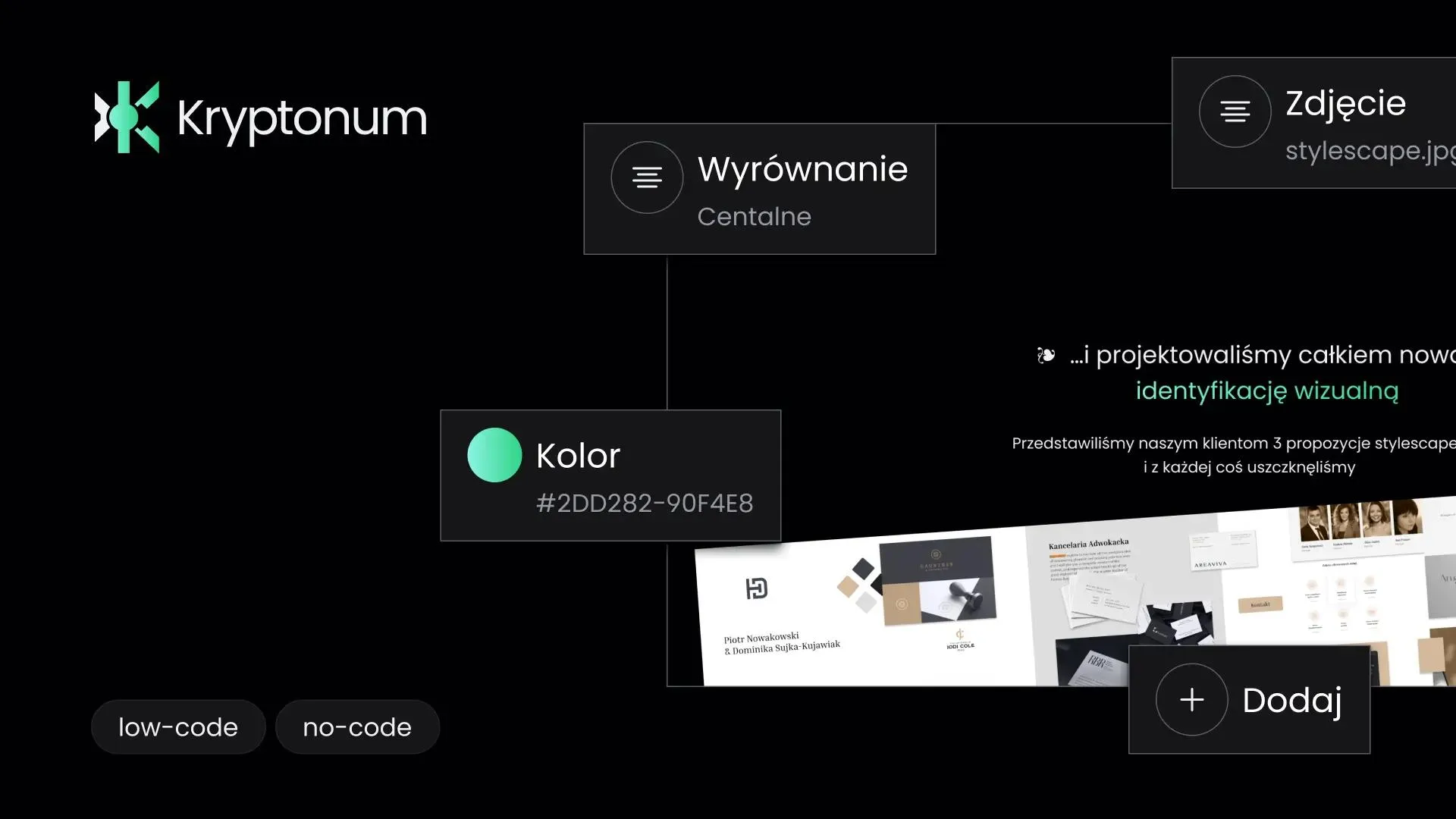
❧ Does the Word “Programming” Make Your Hair Stand on End?
Do you picture an endless jungle of code, like a maze with no way out? Programming can feel a bit like building a spaceship 🚀 Lose one tiny screw (one piece of code), and the entire NASA-style mission comes crashing down.
Here’s the good news: there are technologies that let you design and deploy business apps without writing code at all. The clue is in the names: low-code and no-code. But how does it actually work?
❧ Low-Code and No-Code Technology—The Future of Web and App Development
Some things never change: you wake up, your dog 🐶 wants a walk, your cat 🐱 jumps on your head. Same routine, every day.
Technology is the total opposite—it evolves at light speed. A perfect example? Low-code and no-code. Two unassuming terms with revolutionary potential. They’ve already triggered a digital shift before most people even noticed.
Traditional coding isn’t going anywhere. In fact, thanks to these new technologies, coding will become faster and more automated—making developers even more valuable. With no-code and low-code platforms taking care of the repetitive work, developers can focus on the advanced, highly specialized tasks 💪
This is the future of building complete websites and apps in record time. Even better, low-code and no-code platforms are increasingly powered by AI, making them even more efficient. The next few years are going to be wild—don’t let your business fall behind.
❧ No-Code vs Low-Code Tools—What’s the Difference (and What’s on the Menu 🧇)?
Think of them as two different meals—both tasty, but each with its own flavor.
Low-code is for the brave. You don’t get a knife, fork, or even chopsticks 🍴. Without at least a basic grasp of tech, syntax, and how apps or websites function, it’s tricky. But you don’t have to be a developer. With a few weeks of learning, you can absolutely build a simple app.
Yes, you’ll need to know where to drop certain elements of code—that knowledge is priceless. But the entry barrier is still way lower than with traditional programming.
No-code, on the other hand, is like being served a ready-to-eat meal 🍝 You don’t need any coding skills at all. Using intuitive drag-and-drop editors, you can build functional apps quickly. Need automated invoices, client email sequences, payment reminders, or task assignments for your sales team? All click-and-play.

❧ Low-Code in Practice—How Does It Work?
To build something from scratch with low-code, you’ll need to plan. Step by step:
-
Choose a low-code platform
Base your choice on user numbers, computing power, budget, and must-have features.
-
Build the app structure
Use pre-made modules and templates. If you hit a limitation, pivot fast — or custom-code that feature and plug it into the low-code system.
-
Check app logic
Walk through the core user journey. Then test secondary functions. They don’t need to be perfect yet—the aim is speed, validation, and prototyping.
-
Test the app
Create scenarios for different user types (e.g. an admin creating an account, a visitor signing up to a mailing list) and verify they work.
-
Share for testing
If it works well enough (not perfectly), release it to a small group. Gather feedback, improve, repeat.
❧ No-Code in Practice
The flow is similar, but way less work. The upside: it’s fast, intuitive, and drag-and-drop. You can go from idea to prototype in hours or days.
The downside: limited flexibility. If the platform doesn’t have the block you need… tough luck. Either switch platforms or call in a developer.
Steps:
-
Pick a no-code platform
Drag-and-drop text boxes, buttons, images, etc.
-
Define app logic
Its functions, audience, and goals. Draw a simple info architecture if you can.
-
Build your vision
Get a working prototype live as fast as possible.
-
Test critical user paths
Make sure it works.
-
Show it to users
Check if they understand its purpose and value.
❧ Flexible Coding With Low-Code and No-Code—Pros and Cons
Building applications with no-code and low-code platforms is exciting thanks to their innovative approach, enabling accelerated software development for businesses. There are plenty of advantages that come with bringing apps and websites to life this way.
The pros:
-
Speed and Efficiency (Like a Japanese Shinkansen)
Ready-made components + simple UI = rapid prototyping and faster go-to-market. Huge competitive edge.
-
No Need to Build a Spaceship
Even non-developers can build apps. Lower entry barrier = more people experimenting with ideas.
-
Save Time and Money
Faster, cheaper builds than traditional coding (at least for simpler apps). Prototypes and small projects are delivered and tested quickly.
-
Community Power
No-code and low-code platforms come with thriving online communities full of tutorials and support. Great place to connect with like-minded creators.
The cons:
-
Developer Still Required
Complex apps will always hit the limits of drag-and-drop. That’s when custom coding steps in.
-
Limited Customization
You’re tied to the platform’s architecture. A critical limitation could break your project.
-
Integration Issues
Linking with existing systems can be messy if the platform doesn’t support the right connections.
-
Security Risks
Pre-built components can expose you to vulnerabilities, outdated software, or data leaks. The more freedom the platform gives, the more room for hackers.
❧ What Can You Build With Low-Code and No-Code?
-
Simple websites
-
Mobile apps for iOS and Android
-
Business process apps (CRM automations, HR management, warehouse integrations)
-
Forms, surveys, marketing automation tools
It’s important to keep the scale of the project in mind and consider the task at hand. With low-code—and even more so with no-code, you won’t be able to build advanced applications. That’s where experts come in: developers and UI/UX designers who can craft powerful, intuitive solutions that deliver on business goals.
That said, when used wisely, low-code can dramatically speed up the delivery of simple features—freeing up top-tier specialists to focus on truly demanding tasks.
And here’s where we can finally clear up the doubts: will low-code and no-code dethrone traditional programming? Absolutely not! These technologies play a completely different game 👾 They won’t replace standard programming—but they complement it beautifully.
❧ The Most Popular Low-Code and No-Code Platforms
New players appear every month, but some top picks include:

What can we recommend? Coda, Webflow, Framer X, Make, Zapier, Notion, Tally, Typeform, MailerLite, MailChimp, AirTable.
❧ Such Platforms Are Widely Used by Developers and Companies
They are widely used across many areas of business, enabling companies to react quickly to shifting market and customer needs.
Thanks to these tools, you can automate business processes such as order management, employee time tracking, or support for marketing and sales activities. Another powerful use case is building landing pages that help generate leads and acquire new customers (using tools like MailerLite, MailChimp, Webflow, or FramerX). Equally valuable are data analysis apps that provide insights for optimizing business decision-making.
With platforms like MailerLite or MailChimp, marketing funnel automation becomes smoother and faster. Sales teams also benefit: with Sellizer, for example, they can automatically create and send proposals—while instantly seeing how many were opened and which slides got the most attention. Finance teams gain too: by cleverly integrating AirTable, they can build spreadsheets on steroids. For broader process automation, we recommend Notion and Make.com, which streamline workflows and save companies a significant amount of money.
Entrepreneurs regardless of industry should take the time to explore low-code and no-code. These are technologies of the future, growing and maturing right before our eyes. Ignoring them means risking being left behind.

